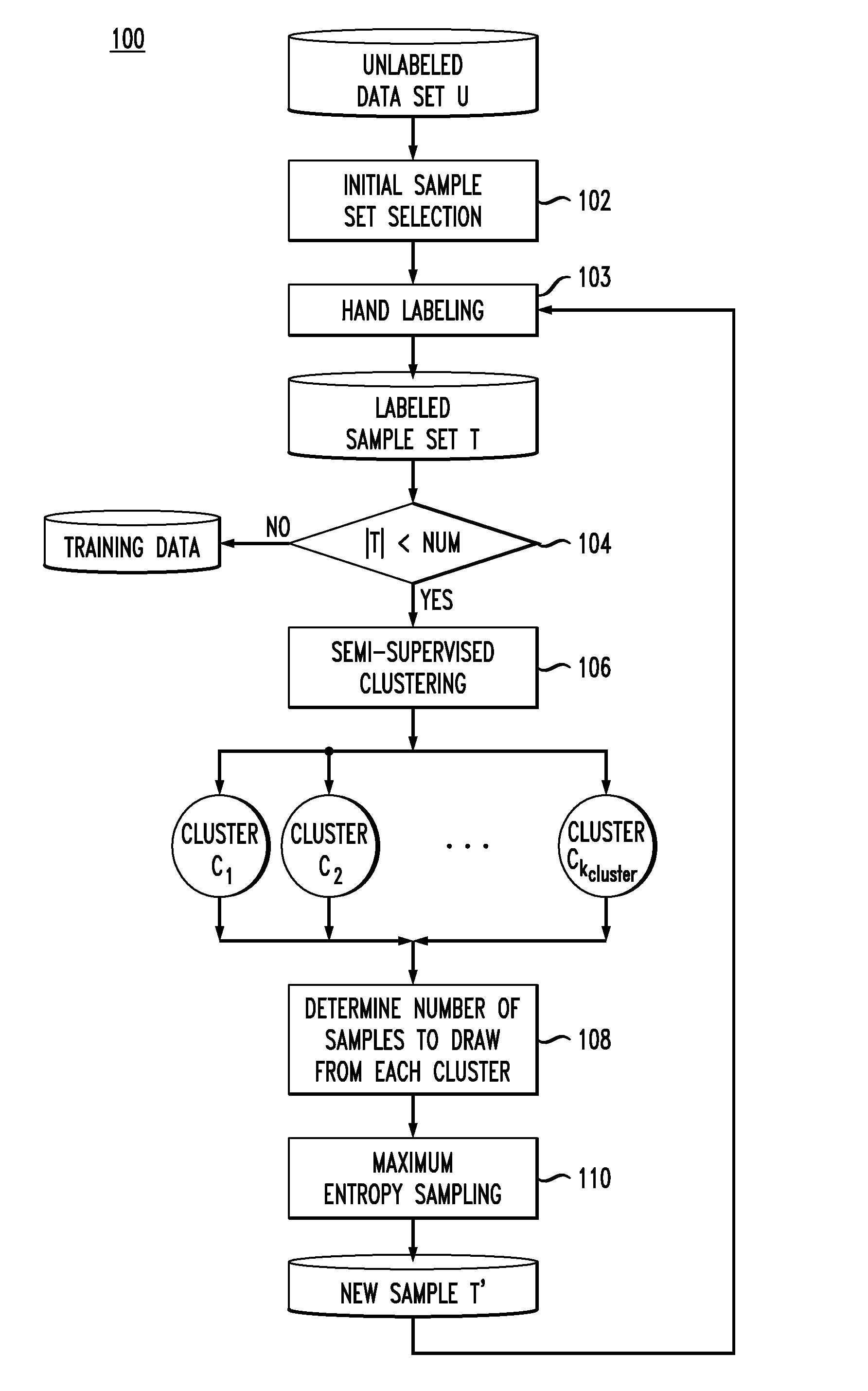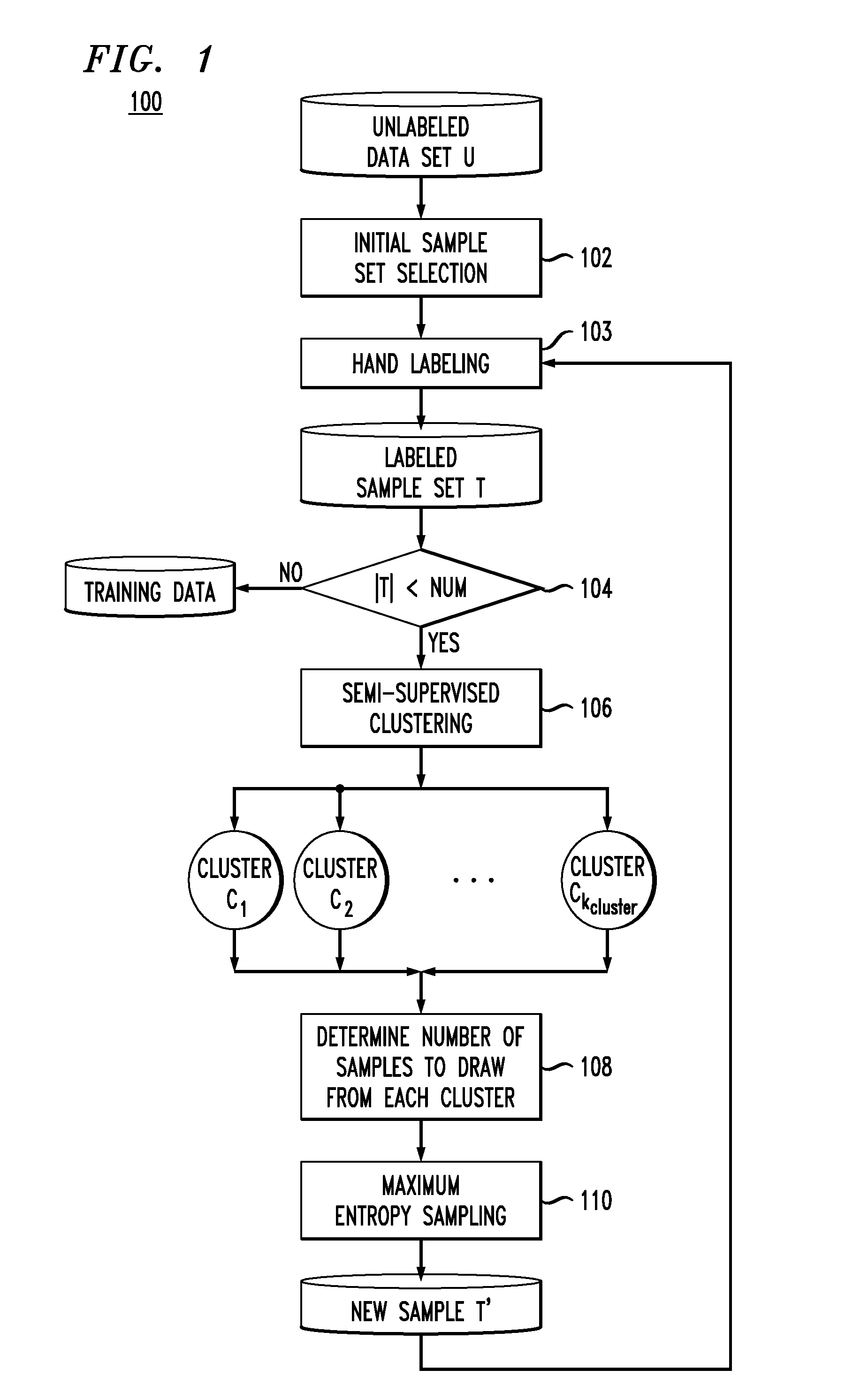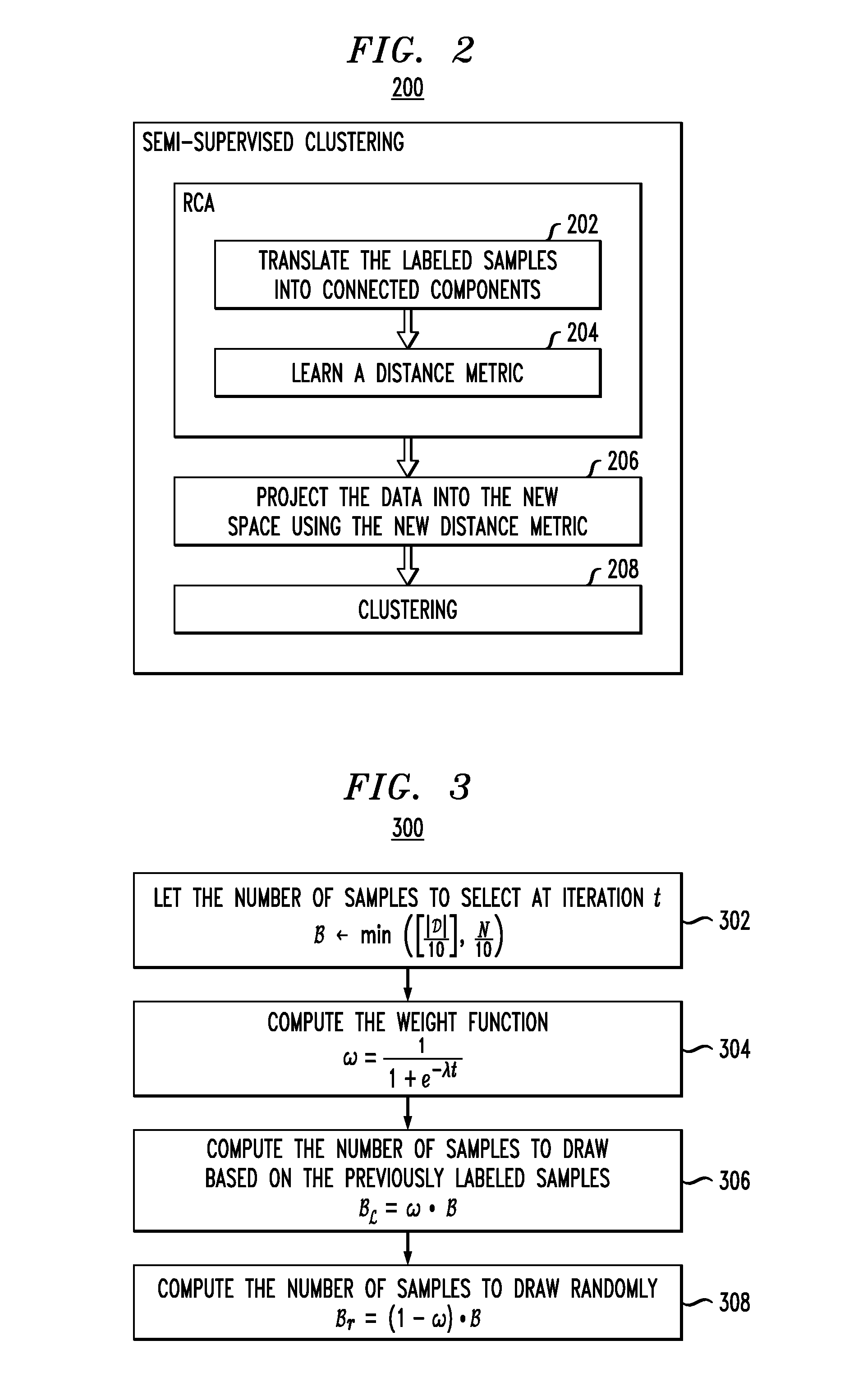Techniques for Generating Balanced and Class-Independent Training Data From Unlabeled Data Set
a class-independent, training data technology, applied in the field of data mining and machine learning, can solve the problems of skewed results for imbalanced data, difficult to obtain representative subsets, and difficult to obtain labeled data to train predictive models, so as to improve the convergence of iterative processes, improve the convergence of geographical locations, and more balanced sets
- Summary
- Abstract
- Description
- Claims
- Application Information
AI Technical Summary
Benefits of technology
Problems solved by technology
Method used
Image
Examples
Embodiment Construction
[0023]Given the above-described problems associated with the conventional approaches to creating training data sets for predictive modeling, the present techniques address the problem of selecting a good representative subset which is independent of both the original data distribution as well as the classifier that will be trained using the labeled data. Namely, presented herein are new strategies to generate training samples from unlabeled data which overcomes limitations in random and existing active sampling.
[0024]The core methodology 100 (see FIG. 1, described below) is an iterative process to sample for labeling a small fraction (e.g., 10%) of the desired training set at each time, without relying on classification models. In each iteration, semi-supervised clustering is used to embed prior knowledge (i.e., labeled samples) to produce clusters close(r) to the true classes. See, for example, Bar-Hillel et al., “Learning a mahalanobis metric from equivalence constraints,” Journal...
PUM
 Login to View More
Login to View More Abstract
Description
Claims
Application Information
 Login to View More
Login to View More - R&D
- Intellectual Property
- Life Sciences
- Materials
- Tech Scout
- Unparalleled Data Quality
- Higher Quality Content
- 60% Fewer Hallucinations
Browse by: Latest US Patents, China's latest patents, Technical Efficacy Thesaurus, Application Domain, Technology Topic, Popular Technical Reports.
© 2025 PatSnap. All rights reserved.Legal|Privacy policy|Modern Slavery Act Transparency Statement|Sitemap|About US| Contact US: help@patsnap.com



